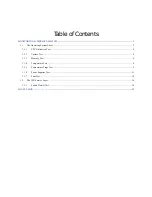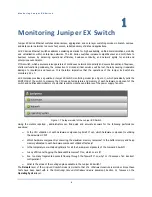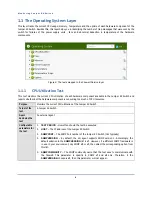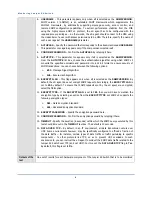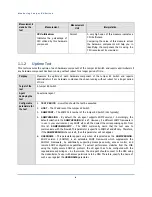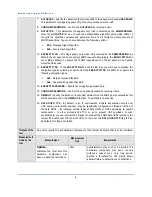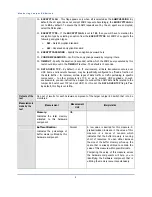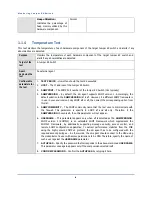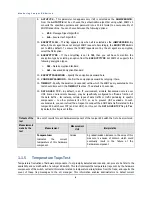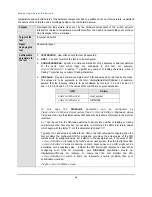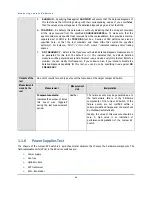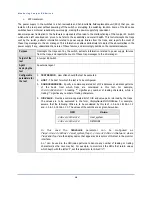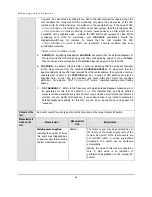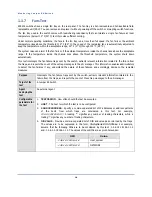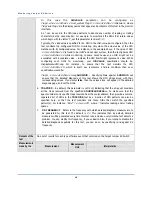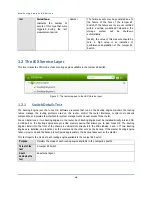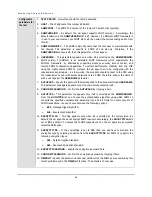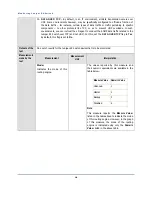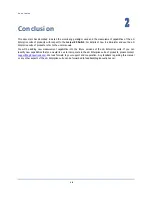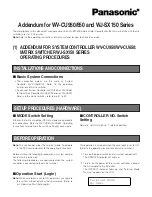
M o n i t o r i n g J u n i p e r E X S w i t c h
14
1.1.7
Fans Test
EX4200 switches have a single fan tray on the rear panel. The fan tray is a hot-removable and hot-insertable field-
replaceable unit (FRU): You can remove and replace it without powering off the switch or disrupting switch functions.
The fan tray used in the switch comes with load-sharing redundancy that can tolerate a single fan failure at room
temperature (below 113° F/45° C) to still provide sufficient cooling.
Under normal operating conditions, the fans in the fan tray run at less than full speed. If a fan fails or the ambient
temperature rises above the threshold 113° F (45° C), the speed of the remaining fans is automatically adjusted to
keep the temperature within the acceptable range, 32° F (0° C) through 113° F (45° C).
The system raises an alarm if the fan fails or if the ambient temperature inside the chassis rises above the acceptable
range. If the temperature inside the chassis rises above the threshold temperature, the system shuts down
automatically.
This test intercepts the fan failure traps sent by the switch, extracts relevant information related to the failure from
the traps, and reports the count of these trap messages to the eG manager. This information enables administrators
to detect the fan failures if any, understand the nature of these failures, and accordingly decide on the remedial
measures.
Purpose
Intercepts the fan failure traps sent by the switch, extracts relevant information related to the
failure from the traps, and reports the count of these trap messages to the eG manager
Target of the
test
A Juniper EX Switch
Agent
deploying the
test
An external agent
Configurable
parameters for
the test
1.
TESTPERIOD
- How often should the test be executed
2.
HOST
- The host for which the test is to be configured.
3.
SOURCEADDRESS
- Specify a comma-separated list of IP addresses or address patterns
of the hosts from which traps are considered in this test. For example,
10.0.0.1,192.168.10.*
. A leading '*' signifies any number of leading characters, while a
trailing '*' signifies any number of trailing characters.
4.
OIDVALUE
- Provide a comma-separated list of OID and value pairs returned by the traps.
The values are to be expressed in the form,
DisplayName:OID-OIDValue
. For example,
assume that the following OIDs are to be considered by this test: .1.3.6.1.4.1.9156.1.1.2
and .1.3.6.1.4.1.9156.1.1.3. The values of these OIDs are as given hereunder:
OID
Value
.1.3.6.1.4.1.9156.1.1.2
Host_system
.1.3.6.1.4.1.9156.1.1.3
NETWORK

